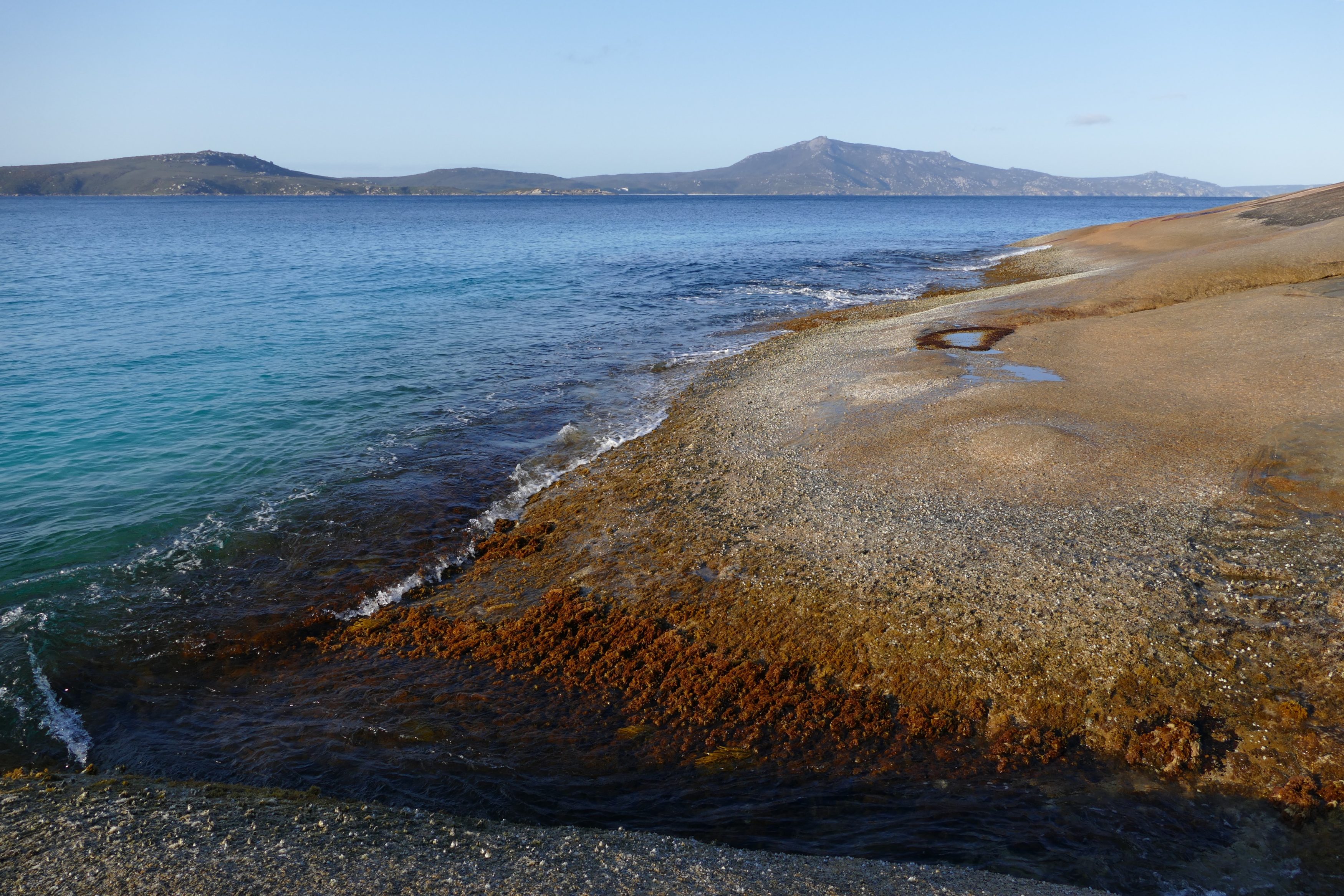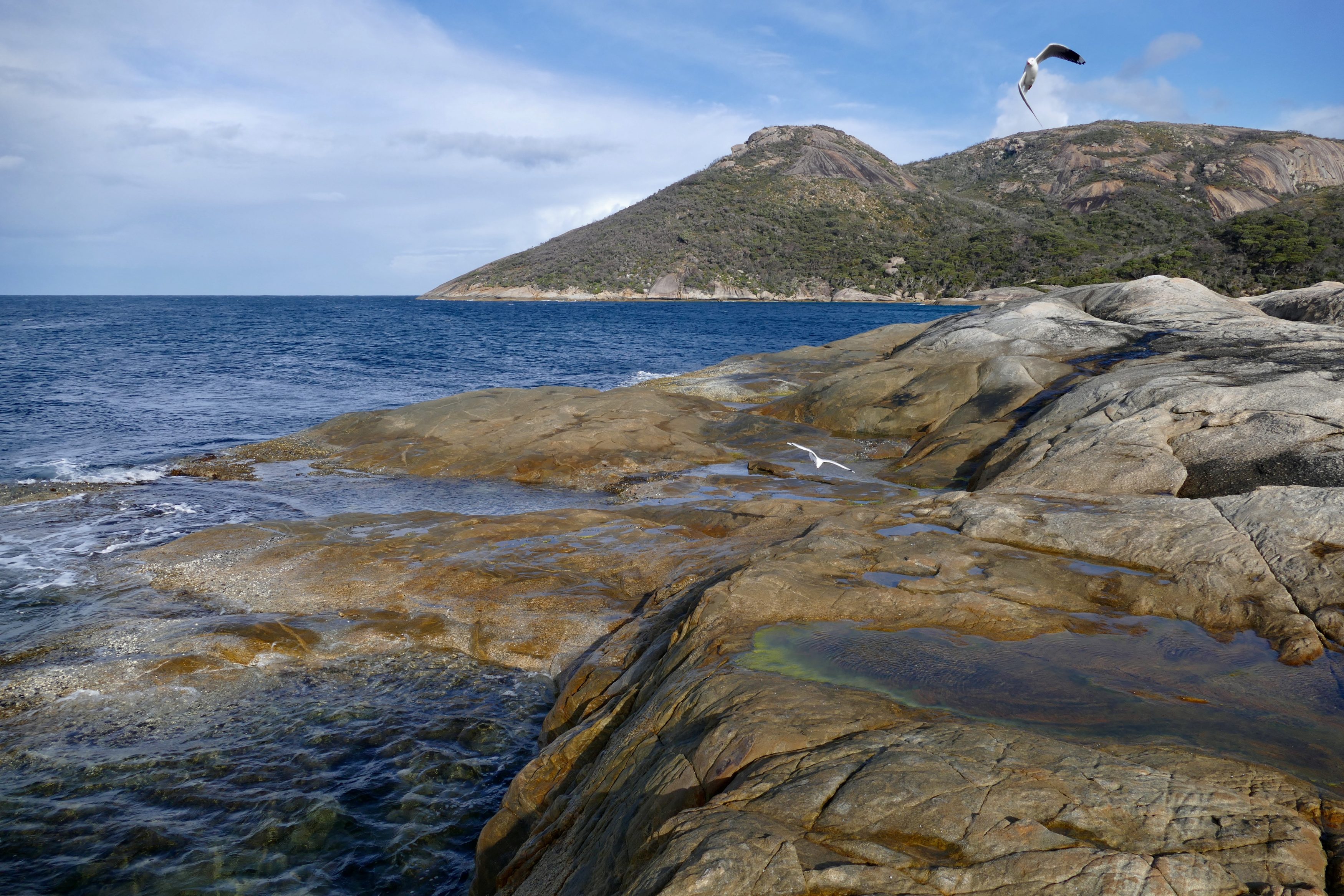Third and final consecutive post on Two Peoples Bay – best viewed after the first pair.
Most of this post’s photos were taken late on the afternoon of 22.09.2017 from atop the rocky headland that separates Little Beach from the great arc of sandy shoreline which curves around Two Peoples Bay to Mount Manypeaks.
If you stand near the eastern edge of the rocks and look south – as per the above photo – Little Beach is nearby, but invisible; however, you have a good view of the headland at Little Beach’s southern end, with Mount Gardner behind/above that headland.
The view over Two Peoples Bay to Mount Manypeaks (565 metres) is utterly different.
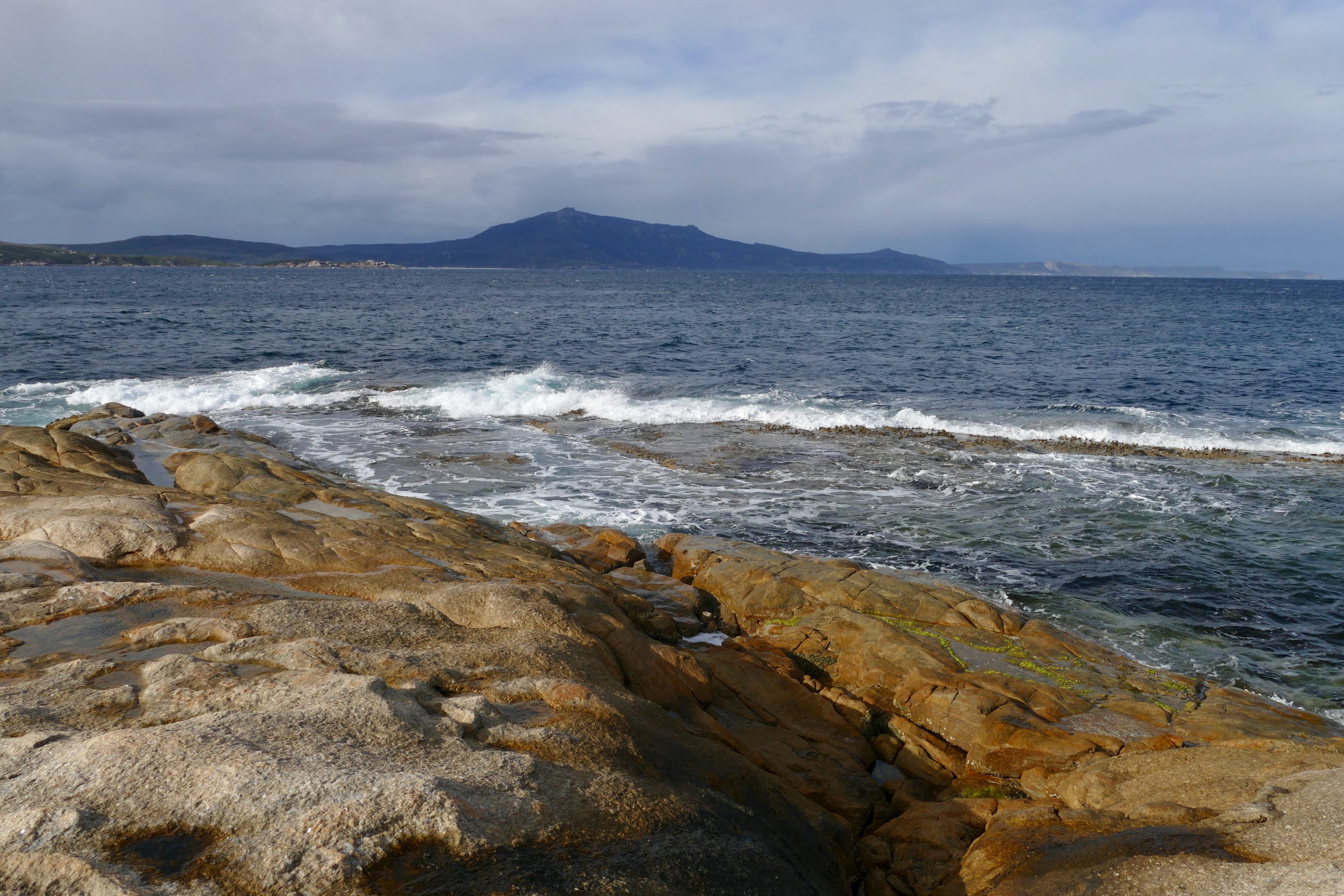
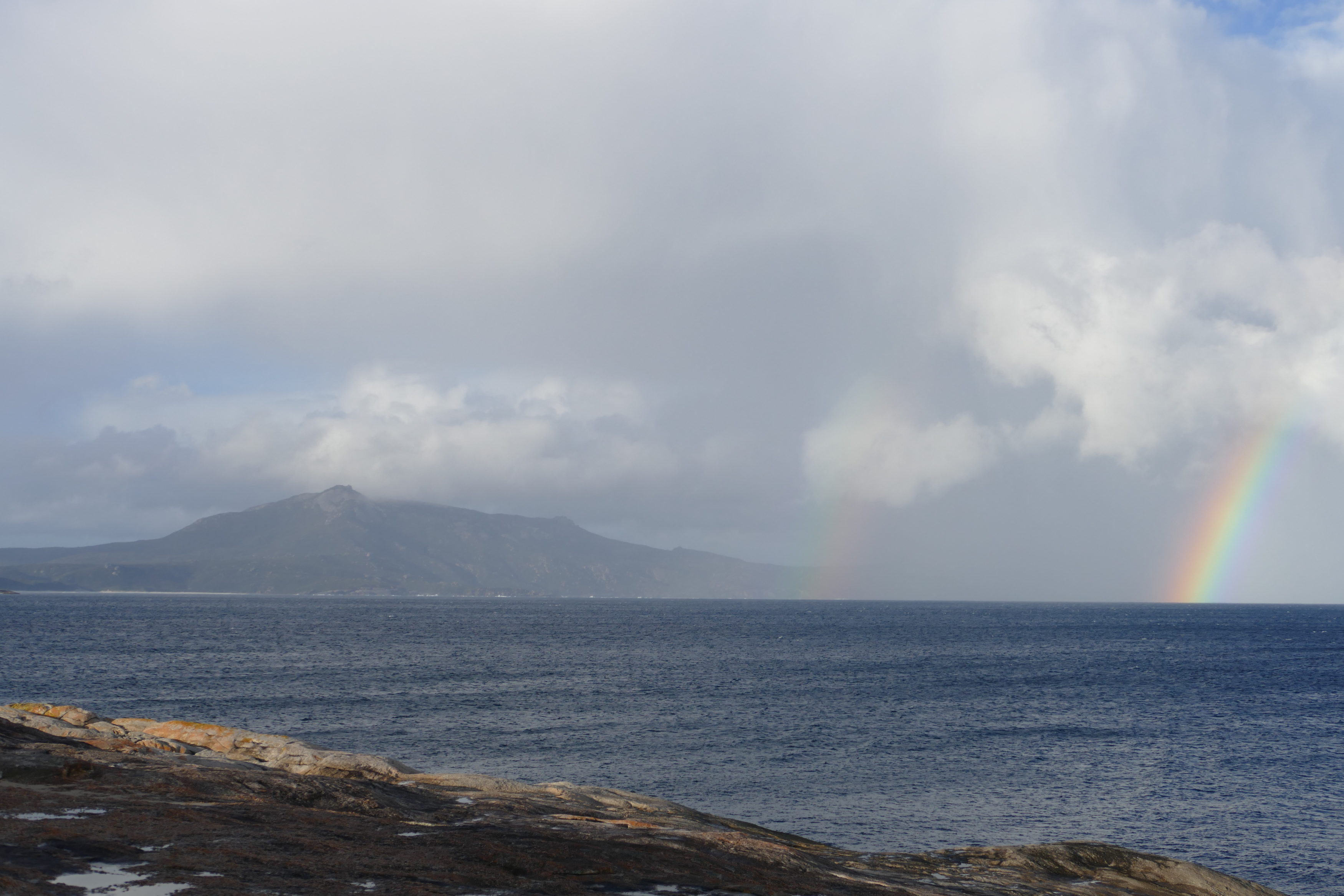
Not merely a viewpoint, this headland is beautiful in itself.
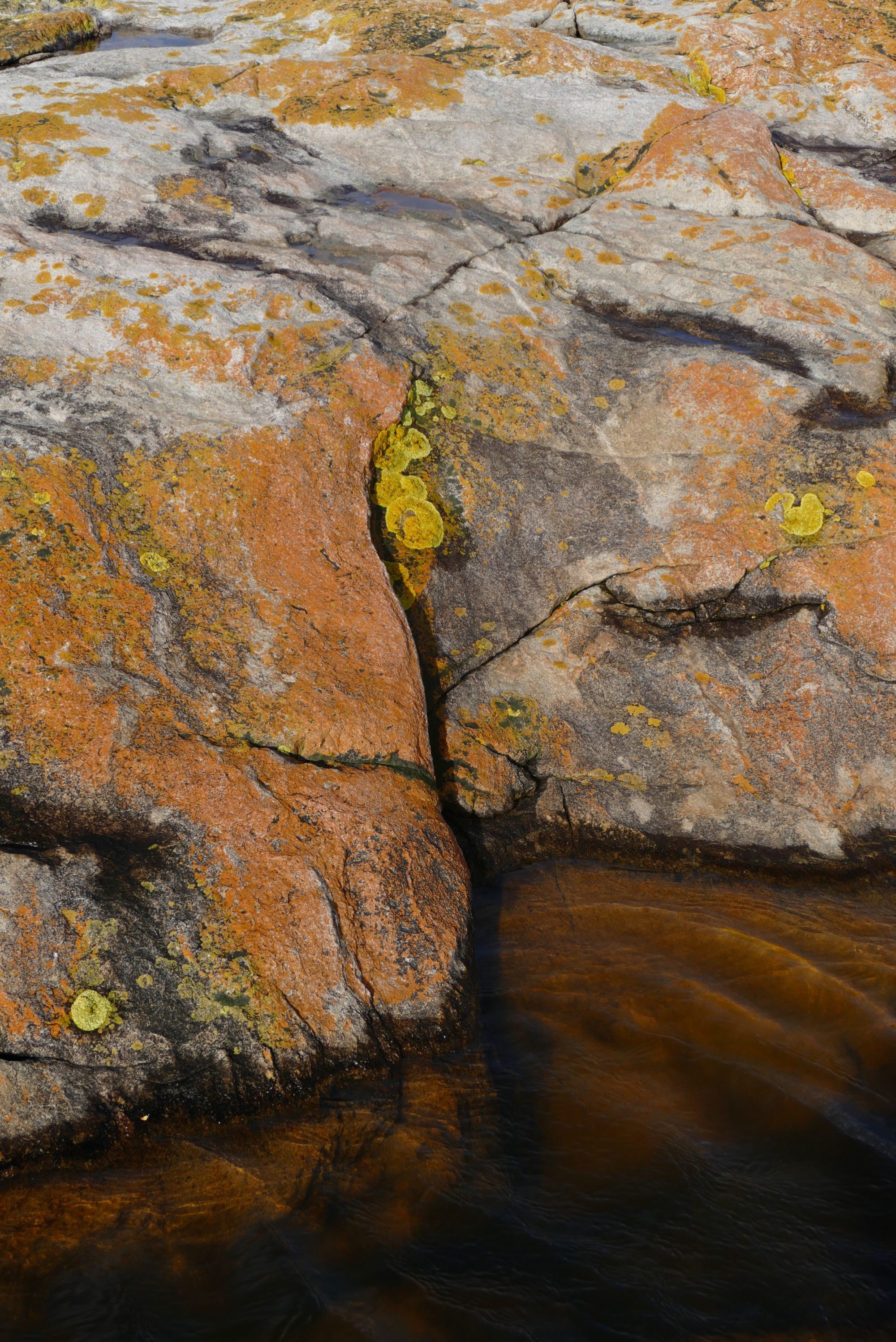
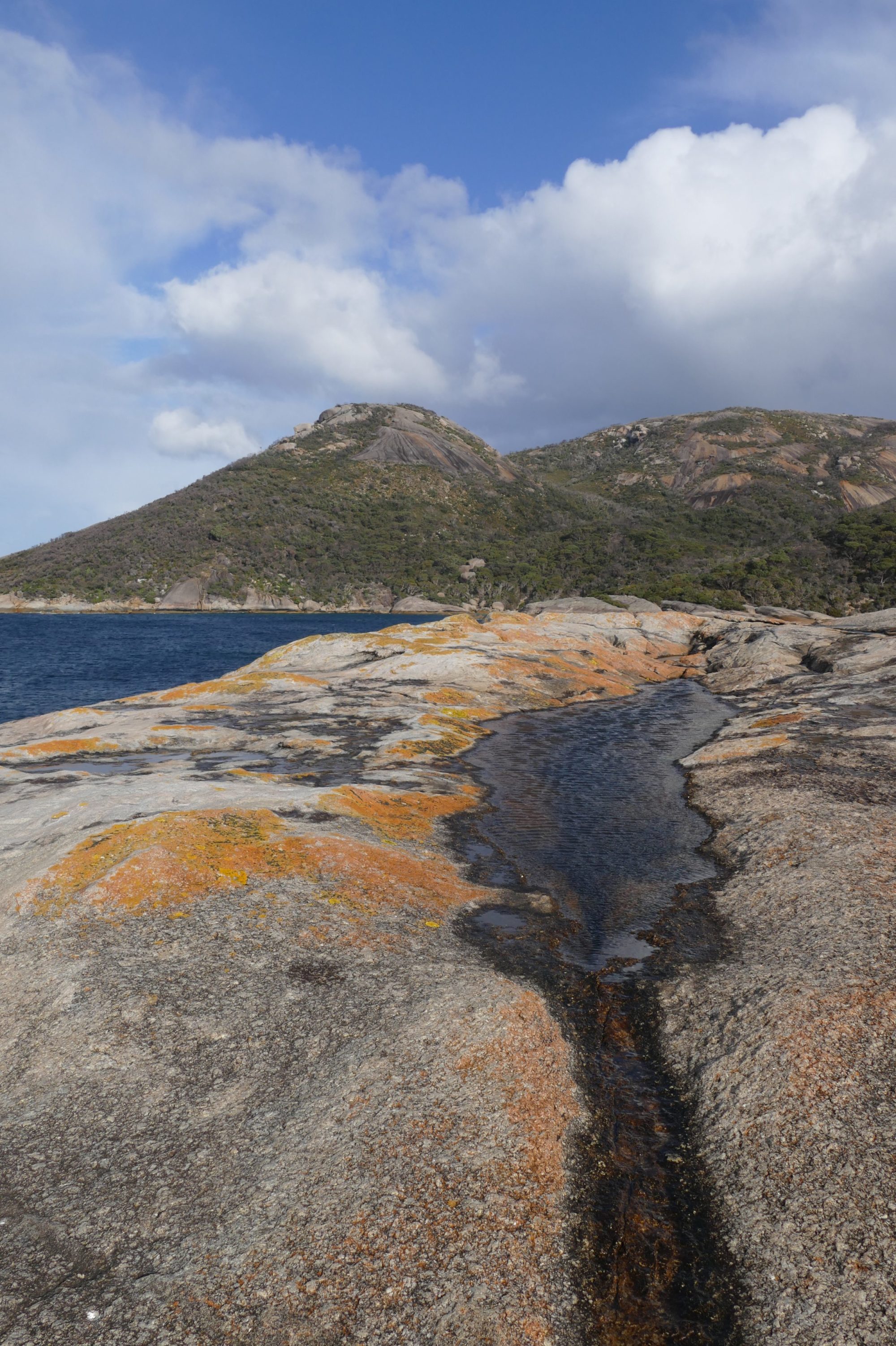
Less than a minute’s walk away, you can gaze down on Little Beach…and when its waters are calm – as they often are, even on days when great waves crash onto the far side of Two Peoples Bay – you may walk directly from rockface onto fine white sand, at Little Beach’s northern end.
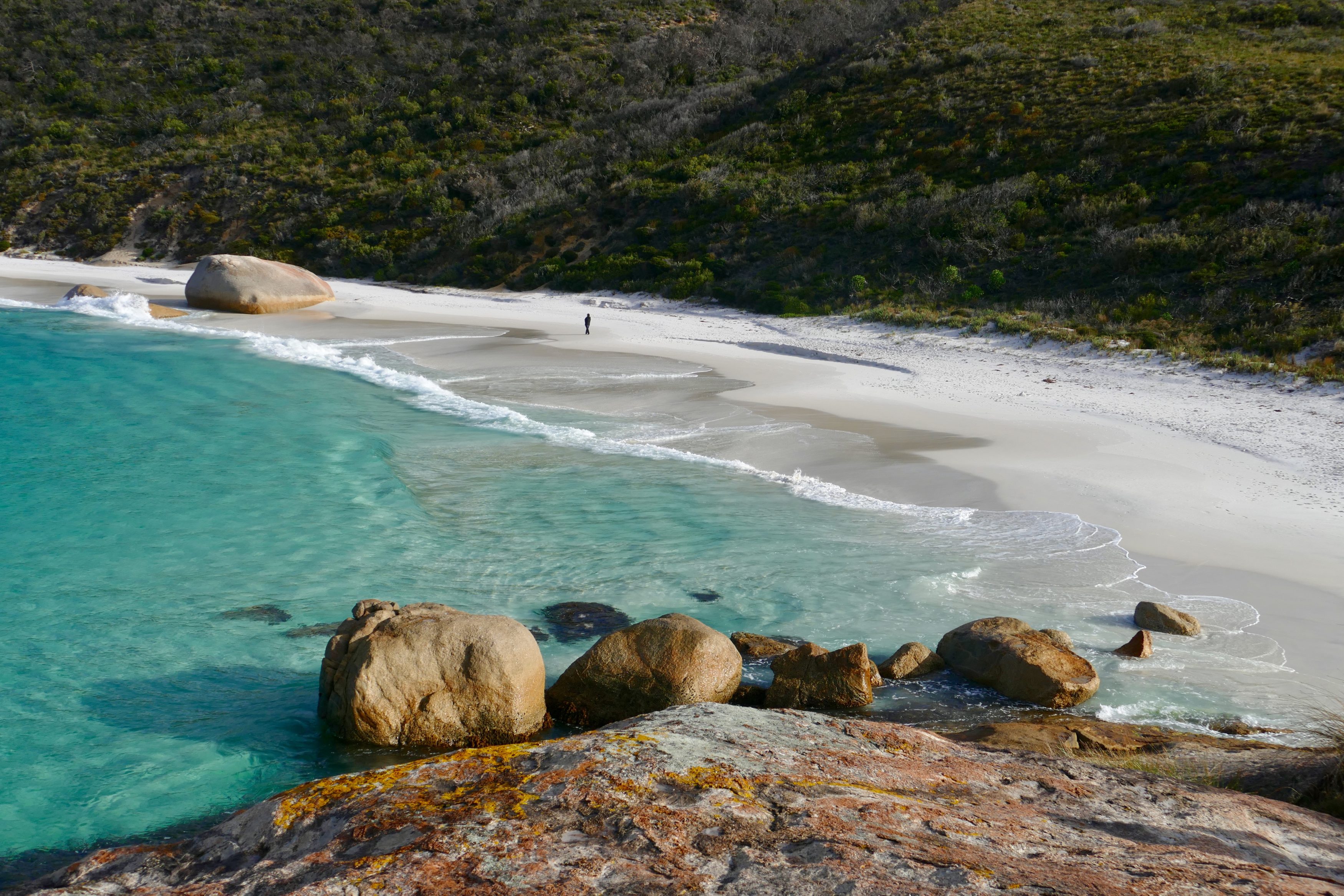
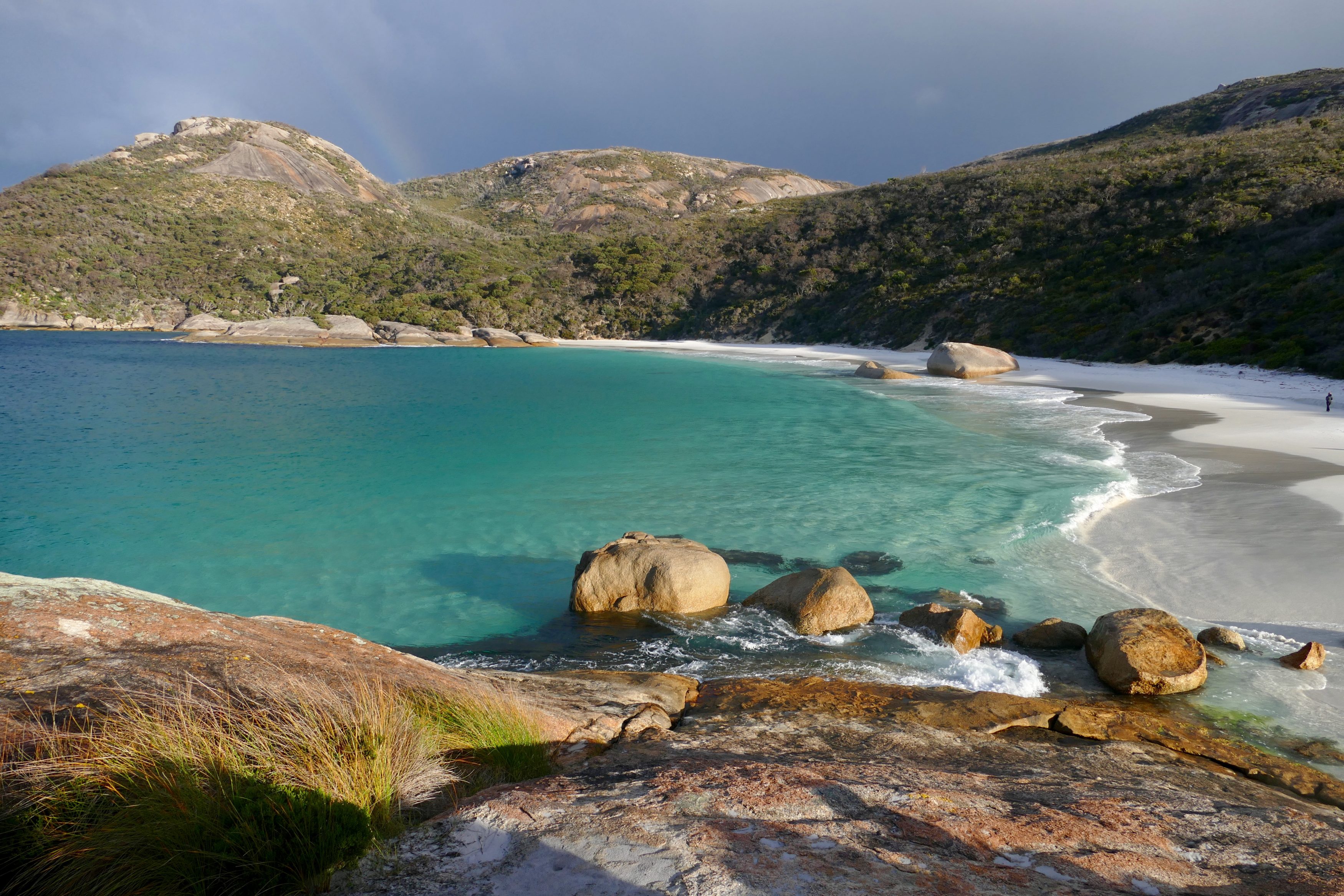
Look closely at the above two images (I suggest you zoom/enlarge) and you will notice the impact of a severe fire, sparked by a lightning strike on Mount Gardner in November 2015.
Fire is not simply a threat; many Australian plants are fire-dependent, not merely fire-resistant.
That said, the thick vegetation on the steep slopes immediately behind Little Beach is rarely torched; the usually-prevailing winds direct fire away, up onto the gentler slopes, above.
No such luck in November 2015.
The rarely-torched, thick vegetation is home to two of the world’s rarest vertebrates.
Both had been “extinct”, until “rediscovered” at Two Peoples Bay.
The Noisy Scrubird’s 1961 rediscovery “saved” Two Peoples Bay, which had been gazetted as a town site, and would surely, othwerwise, inevitably, have been “developed” into a ghastly combo of “luxury resort” and “exclusive/prestige” suburbia-on-sea.
A pro-“development” local council notwithstanding, in 1967 Two Peoples Bay became a Nature Reserve of 4,745 hectares.
Once widespread in Australia’s southwest, Gilbert’s potoroo – the so-called “rat kangaroo” – was presumed extinct before the 19th century’s end.
In 1994 the world’s rarest marsupial was “rediscovered”, at Two Peoples Bay.
Small populations have since been established on offshore islands.
The November 2015 fire burnt 1,200 hectares and destroyed circa 90% of Gilbert’s potoroo habitat at Two Peoples Bay.
Apparently, it did not incinerate 90% of the potoroos; their immediate survival rate was higher than had been feared.
Still, according to ABC News, another 20 unburnt years would be required before their torched former habitat would be able to support them again.
Some of the fire’s survivors have since been relocated.
The photo below shows some of the “10%” that the fire spared.
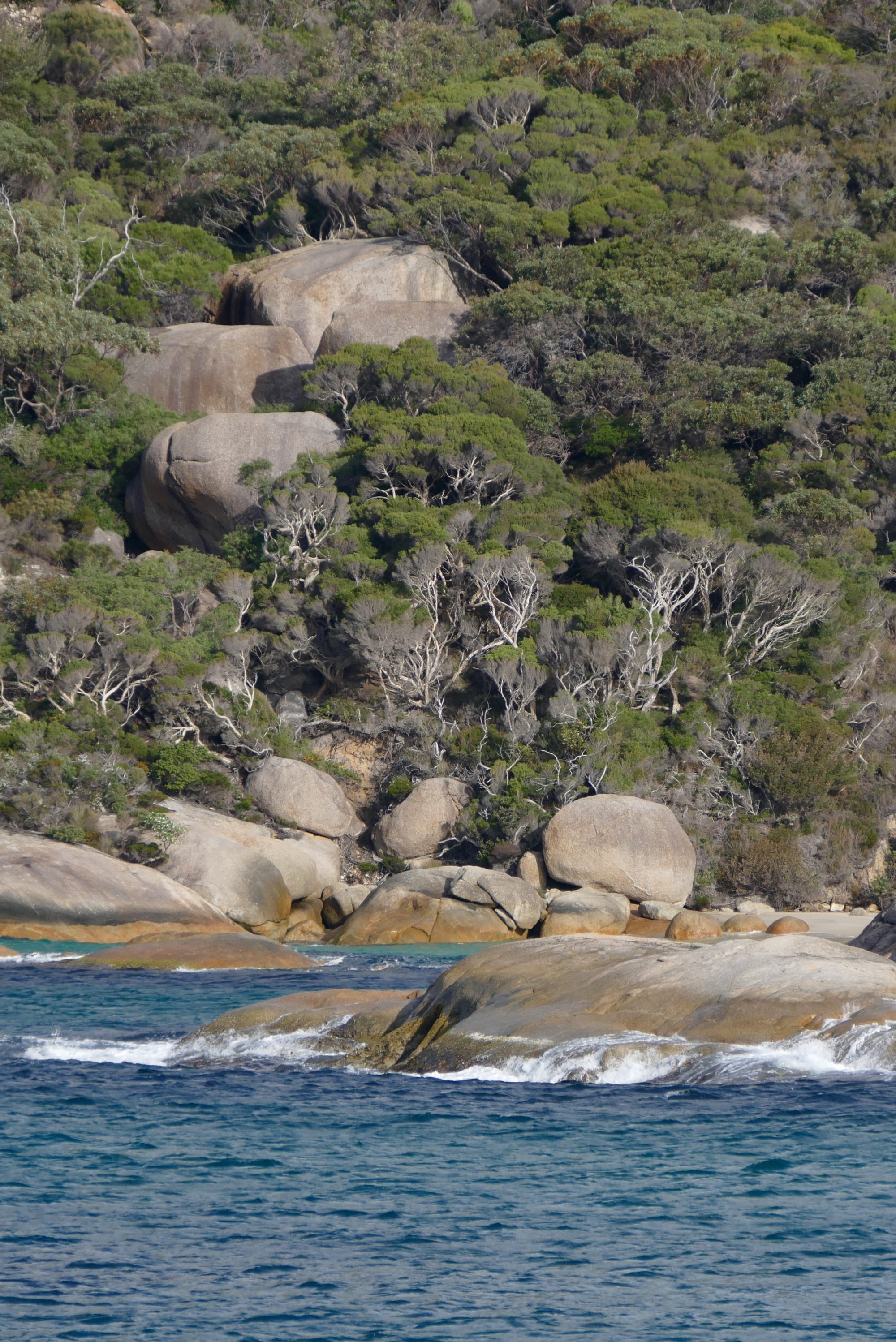
The torched “90%” looked utterly desolate when we saw it in September 2016, so we were pleasantly surprised a year later; aside from a few scoured/slipping/eroding patches, the “90%” is no longer a study in black, white and grey – revegetation is well underway.
On New Year’s Day in 2016 – less than two months after a natural fire burnt more than one quarter of Two Peoples Bay Nature Reserve – human stupidity caused a much bigger fire.
The guilty person set off fireworks on Norman’s Beach; as the ABC reported in August 2016 the remorseful fool, who did (eventually) hand himself into police, received a suspended prison sentence and was ordered to pay $164,000.
“His” fire burnt 2,072 hectares.
Extinguishing it involved 4 planes, 600 hours worth of paid effort by Department of Parks and Wildlife (DPAWS) staff, and 3,600 hours of unpaid volunteer firefighters’ effort.
If you visit Two Peoples Bay you are most unlikely to see a Gilbert’s potoroo or a Noisy scrubbird, but chances are excellent that you will enjoy a close encounter with a quenda
Two likely places are anytime in the bush between the Visitors’ Centre and the big beach, and late afternoon in the car park by Little Beach.
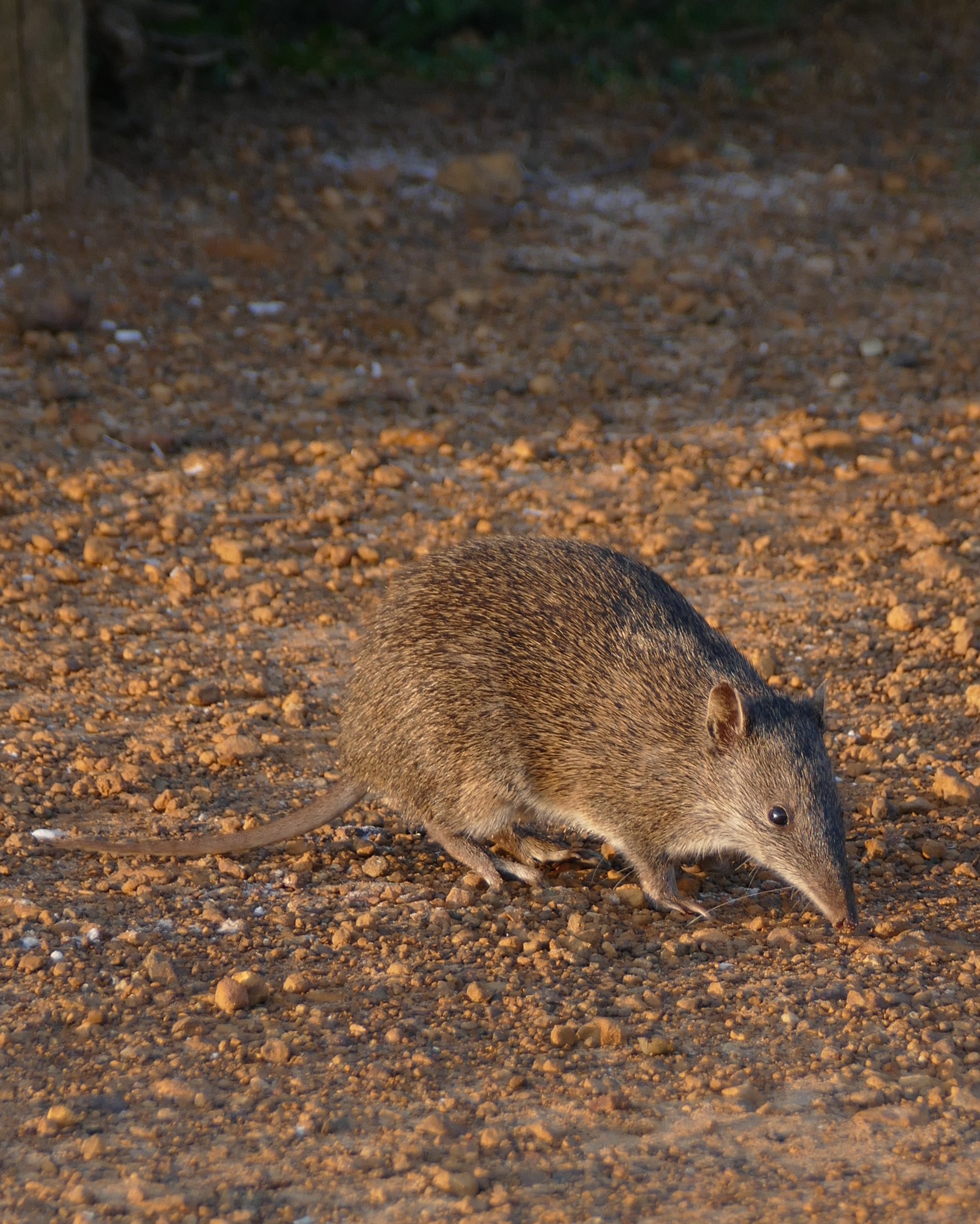
As Heraclitus observed more than 2, 500 years ago, one cannot step into the same river twice.
Two Peoples Bay is different, every time…no matter how many times you are lucky enough to experience it.
